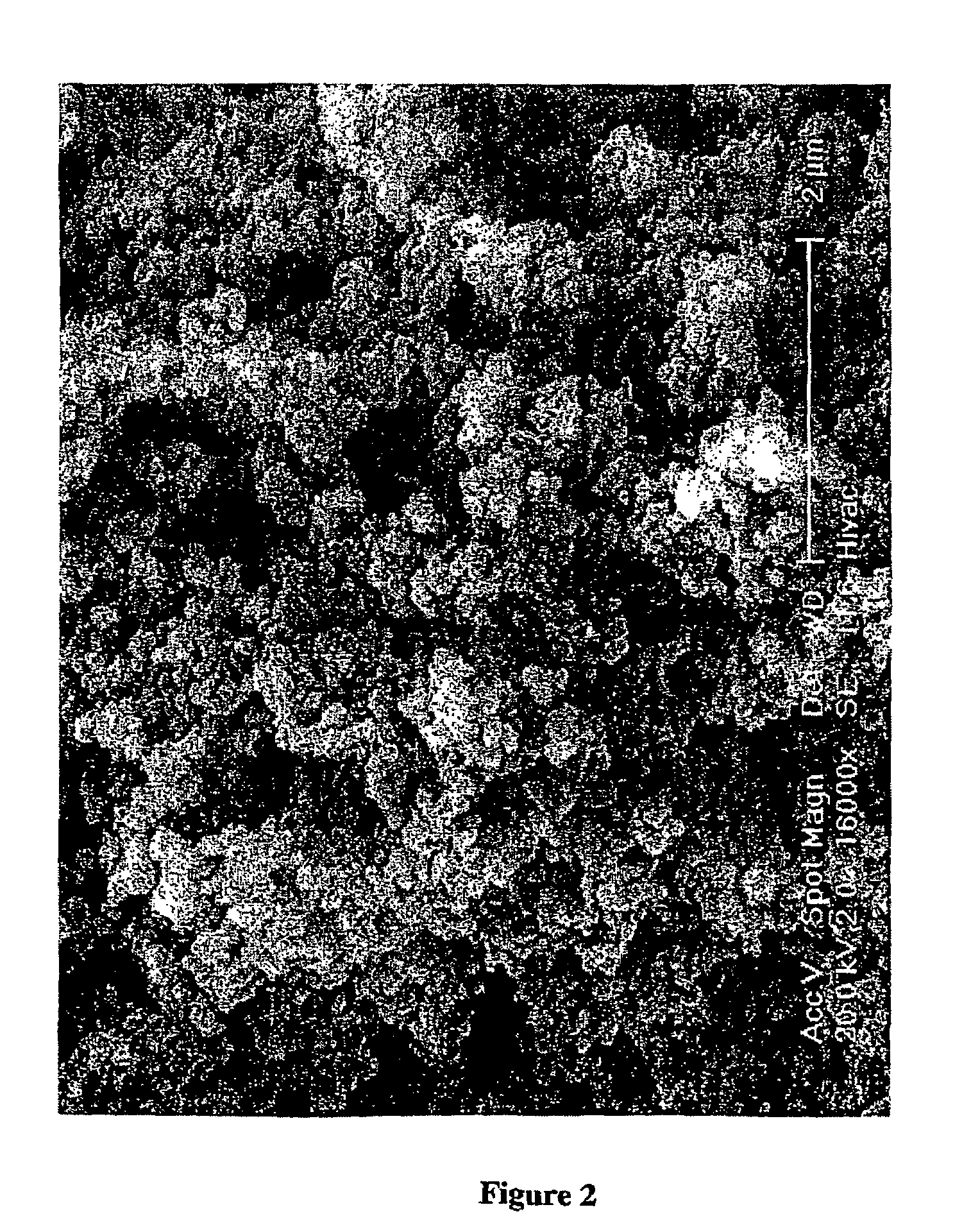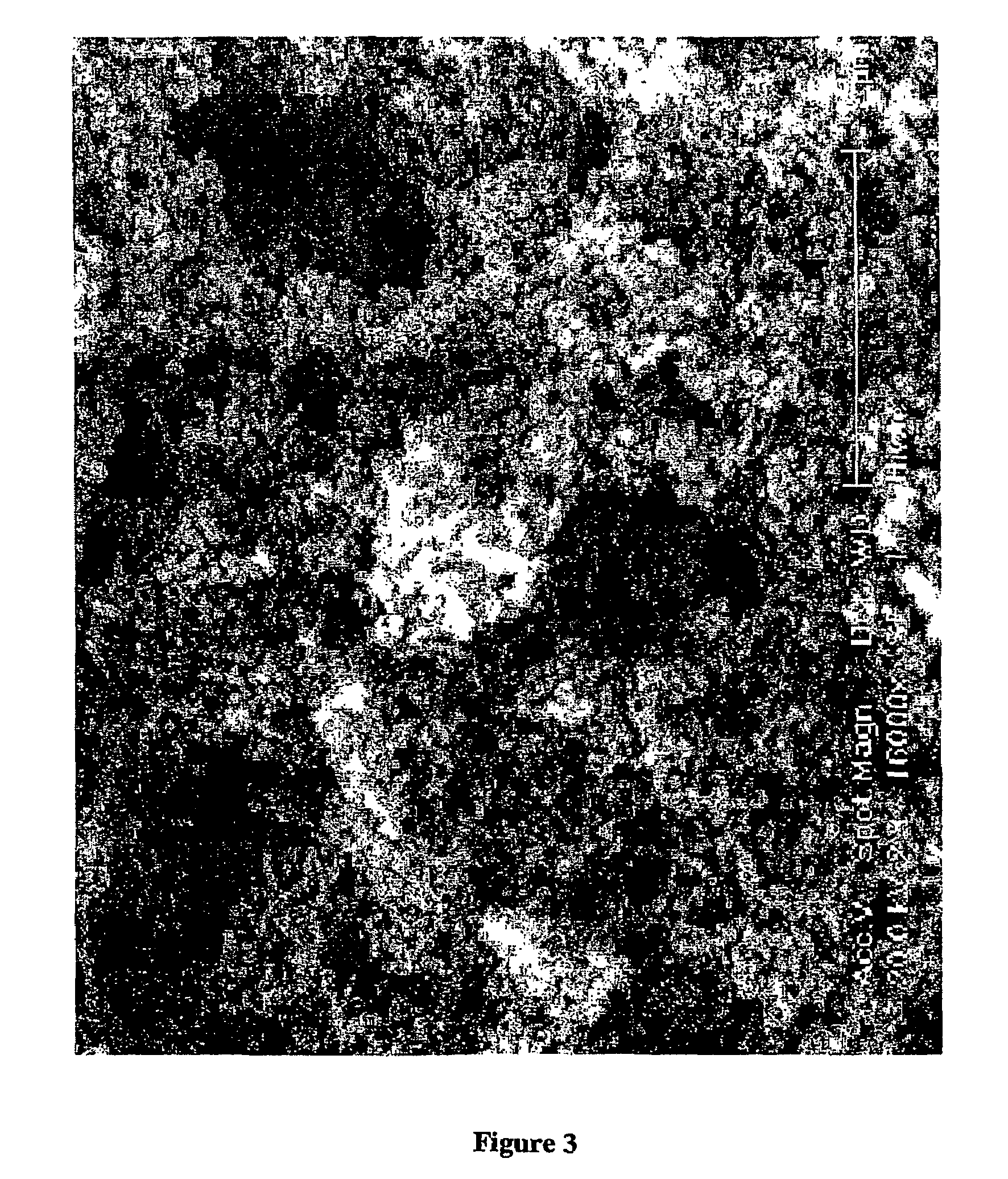Process for preparing particles
a technology of particle particles and a process, which is applied in the field of process for preparing particle particles of substances, can solve the problems of large changes in fluid density and hence solvent power, unsuitable for use with substances, and protein unfolding or denaturing
- Summary
- Abstract
- Description
- Claims
- Application Information
AI Technical Summary
Benefits of technology
Problems solved by technology
Method used
Image
Examples
example 1
Example 1.1
Lysozyme (100 mg, ex Sigma-Aldrich) was dissolved in a solution of 300 mg triethyl citrate in water (5 ml) at ambient temperature (approximately 22° C.). The solubility of triethyl citrate in water at 25° C. is 5.7 g / 100 ml
[0105]This solution is mixed with carbon dioxide modified with ethanol through a coaxial nozzle (nozzle tip diameter 0.1 mm) in the chamber of a SEDS apparatus as described in FIG. 1 and accompanying text in WO 95 / 01221. The carbon dioxide and ethanol are co-introduced into one channel of the nozzle at the flow rates indicated below. The lysozyme solution was heated to 50° C. giving a cloudy solution (caused by phase separation of the triethyl citrate as the temperature of the solution exceeded the cloud point temperature of the solution). The solution was then introduced into the SEDS particle formation chamber of the apparatus at the flow rate specified below.
[0106]The lysozyme particles formed, are collected in the bottom of the chamber. The triethyl...
example 1.2
[0110]The process described in Example 1.1 was repeated using the following conditions: 90 bar, 50° C., a flow rate of carbon dioxide 9 ml / min, a flow rate of aqueous solution containing lysozyme and triethyl citrate 0.045 ml / min and a flow rate of ethanol 0.9 ml / min. This resulted in lysozyme particles with a MMD of less than 1 micron was 89%. An SEM of these particles is shown in FIG. 3
example 2
[0111]5 ml of an aqueous albumin solution containing 10 mg / ml was dissolved in a water solution (5 ml) containing 300 mg triethyl citrate and 200 mg Polysorbate 80 (to minimise adsorption of albumin onto process equipment) (albumin ex. Fluka). The process was carried out as described in Example 1 but with the following operating parameters: temperature 50° C., pressure 200 bar (to ensure full extraction of the Polysorbate 80), a flow rate of carbon dioxide:18 ml / min, a flow rate of the albumin solution 0.08 ml / min and a flow rate of ethanol 1.8 ml / min.
[0112]The SEM analysis in FIG. 4 from this experiment clearly shows the uniform sub-micron particles formed.
PUM
| Property | Measurement | Unit |
|---|---|---|
| mass median diameter | aaaaa | aaaaa |
| cloud point temperature | aaaaa | aaaaa |
| diameter | aaaaa | aaaaa |
Abstract
Description
Claims
Application Information
 Login to View More
Login to View More - R&D
- Intellectual Property
- Life Sciences
- Materials
- Tech Scout
- Unparalleled Data Quality
- Higher Quality Content
- 60% Fewer Hallucinations
Browse by: Latest US Patents, China's latest patents, Technical Efficacy Thesaurus, Application Domain, Technology Topic, Popular Technical Reports.
© 2025 PatSnap. All rights reserved.Legal|Privacy policy|Modern Slavery Act Transparency Statement|Sitemap|About US| Contact US: help@patsnap.com



